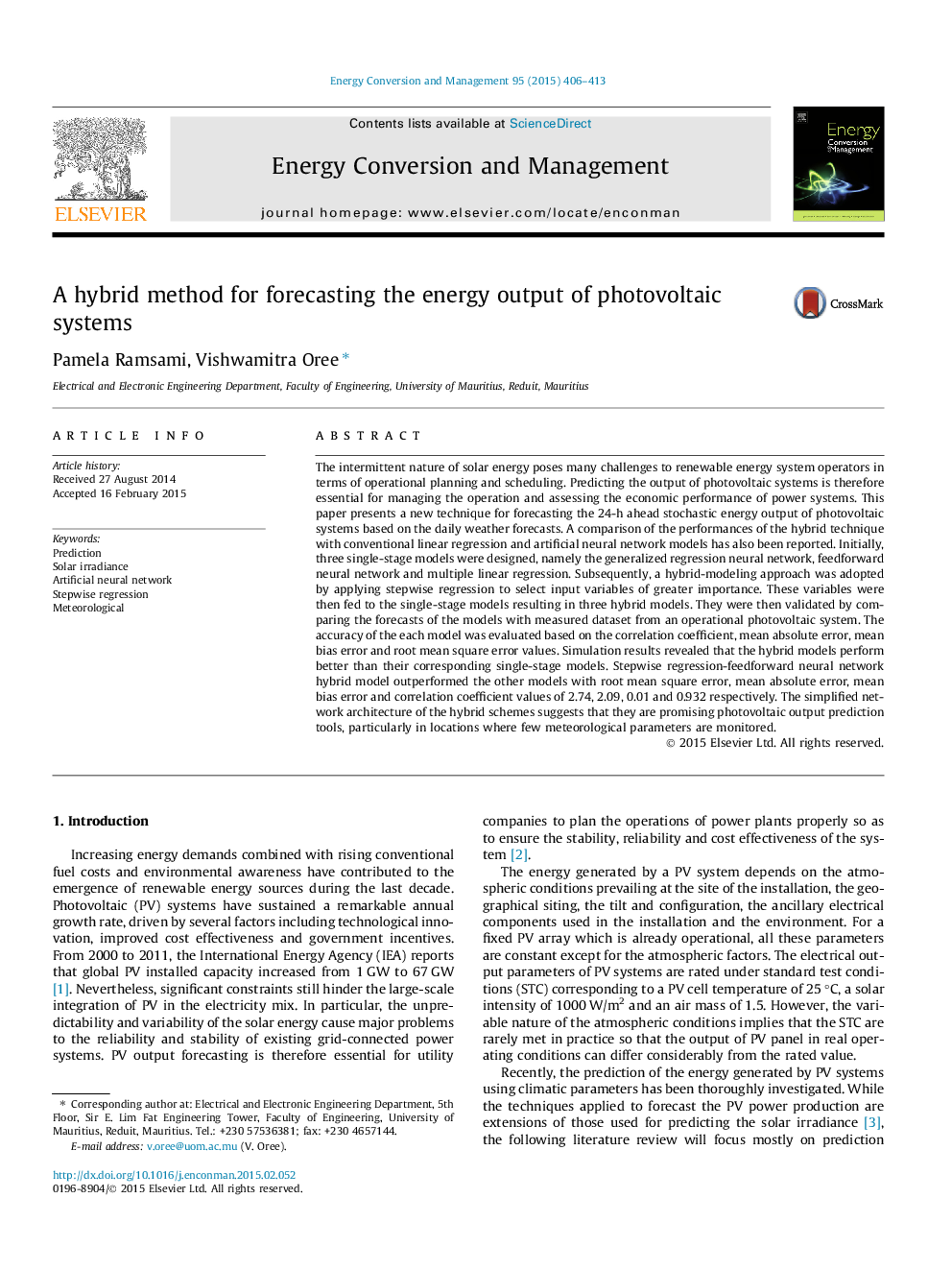| کد مقاله | کد نشریه | سال انتشار | مقاله انگلیسی | نسخه تمام متن |
|---|---|---|---|---|
| 765491 | 1462867 | 2015 | 8 صفحه PDF | دانلود رایگان |
• We propose a novel hybrid technique for predicting the daily PV energy output.
• Multiple linear regression, FFNN and GRNN artificial neural networks are used.
• Stepwise regression is used to select the most relevant meteorological parameters.
• SR-FFNN reduces the average dispersion and overall bias in prediction errors.
• Accuracy metrics of hybrid models are better than those of single-stage models.
The intermittent nature of solar energy poses many challenges to renewable energy system operators in terms of operational planning and scheduling. Predicting the output of photovoltaic systems is therefore essential for managing the operation and assessing the economic performance of power systems. This paper presents a new technique for forecasting the 24-h ahead stochastic energy output of photovoltaic systems based on the daily weather forecasts. A comparison of the performances of the hybrid technique with conventional linear regression and artificial neural network models has also been reported. Initially, three single-stage models were designed, namely the generalized regression neural network, feedforward neural network and multiple linear regression. Subsequently, a hybrid-modeling approach was adopted by applying stepwise regression to select input variables of greater importance. These variables were then fed to the single-stage models resulting in three hybrid models. They were then validated by comparing the forecasts of the models with measured dataset from an operational photovoltaic system. The accuracy of the each model was evaluated based on the correlation coefficient, mean absolute error, mean bias error and root mean square error values. Simulation results revealed that the hybrid models perform better than their corresponding single-stage models. Stepwise regression-feedforward neural network hybrid model outperformed the other models with root mean square error, mean absolute error, mean bias error and correlation coefficient values of 2.74, 2.09, 0.01 and 0.932 respectively. The simplified network architecture of the hybrid schemes suggests that they are promising photovoltaic output prediction tools, particularly in locations where few meteorological parameters are monitored.
Journal: Energy Conversion and Management - Volume 95, 1 May 2015, Pages 406–413
